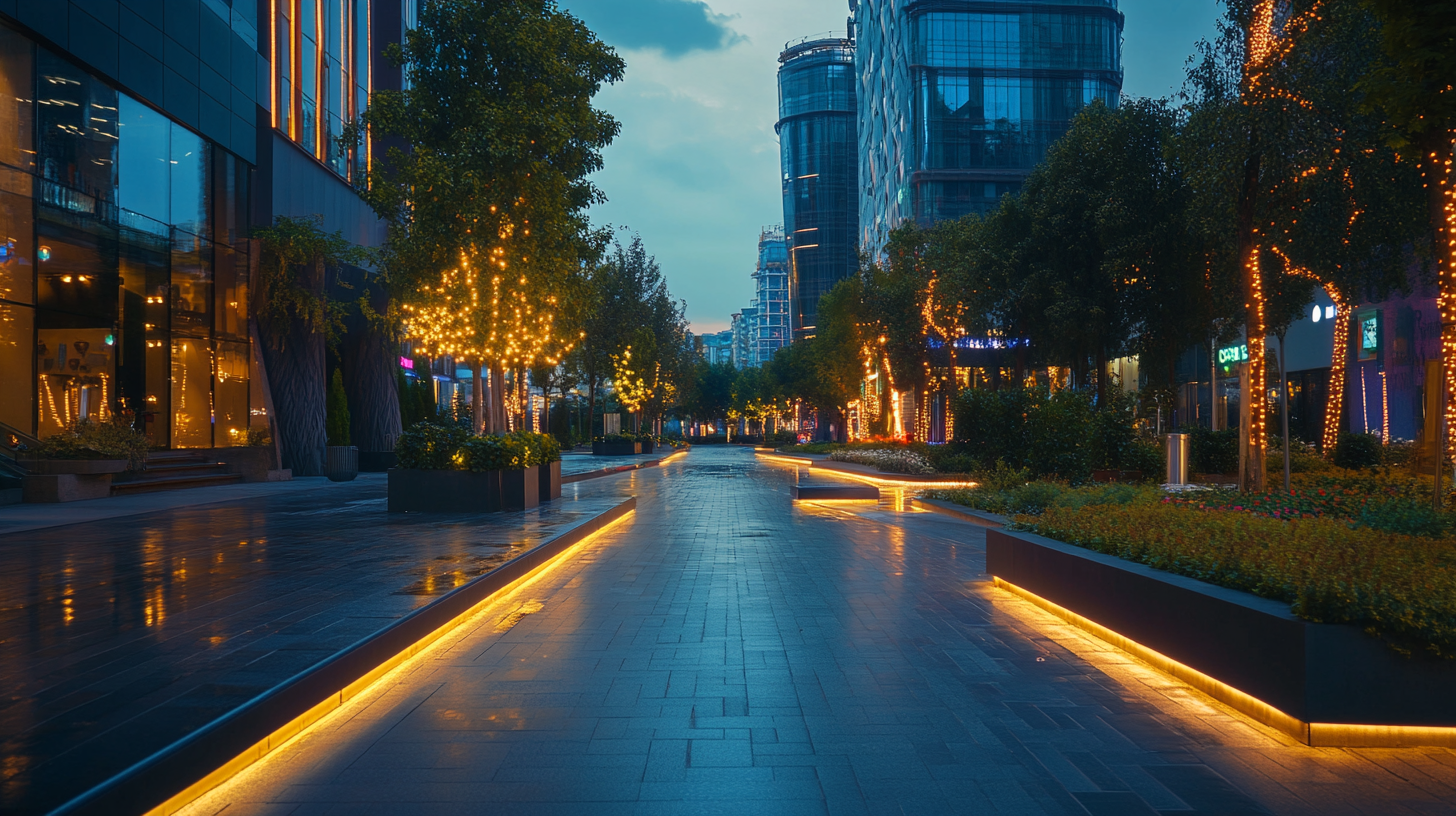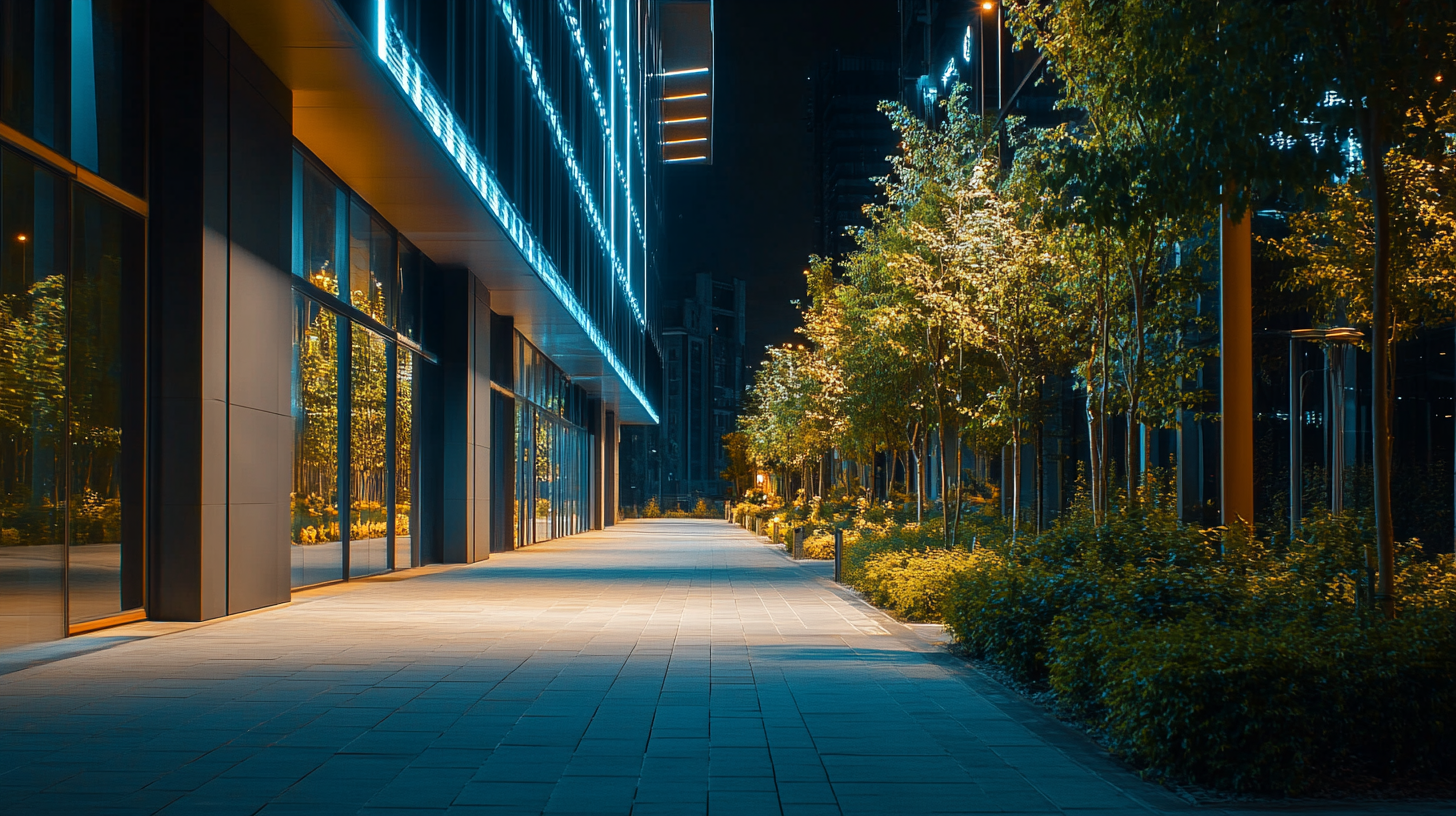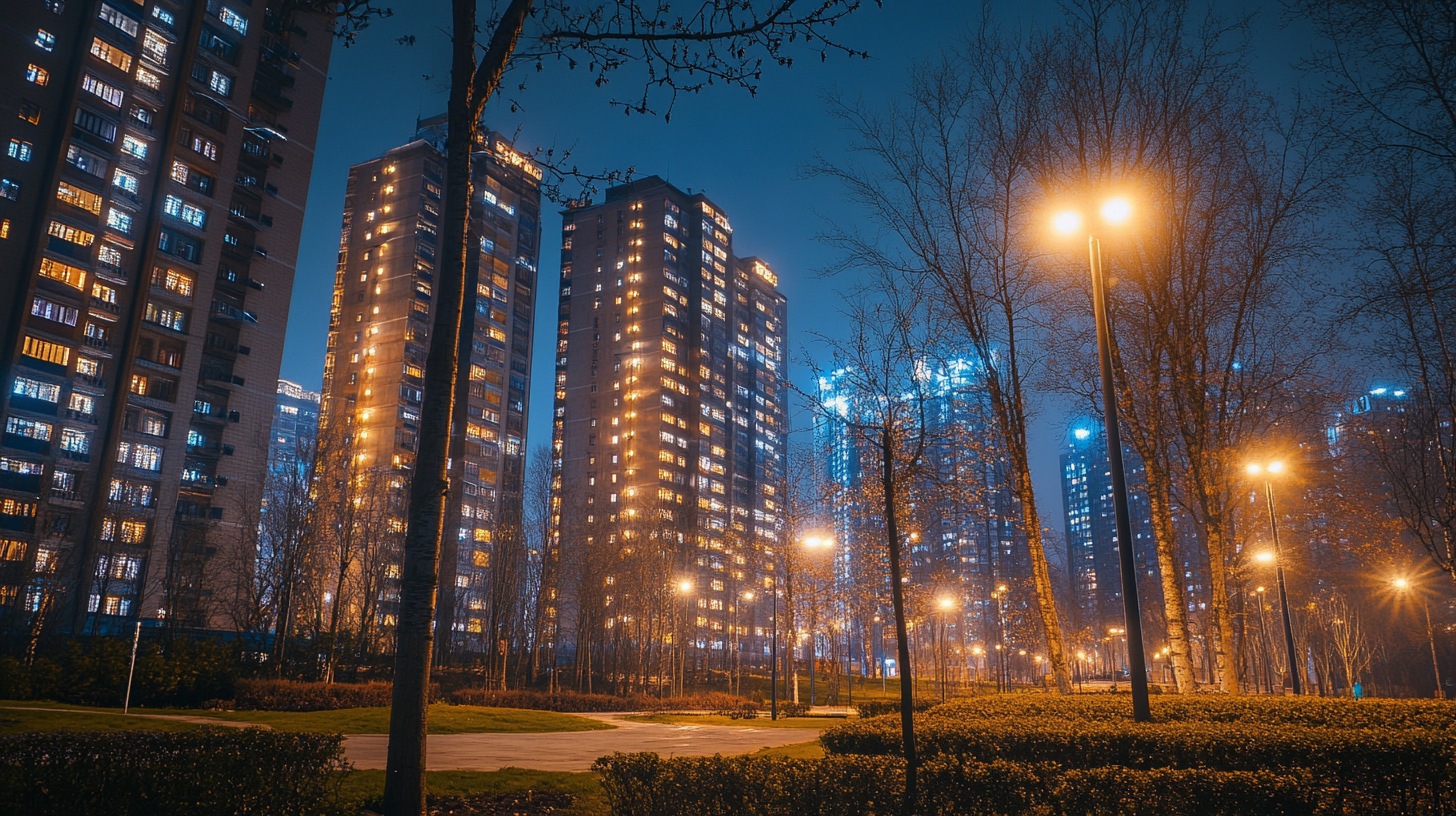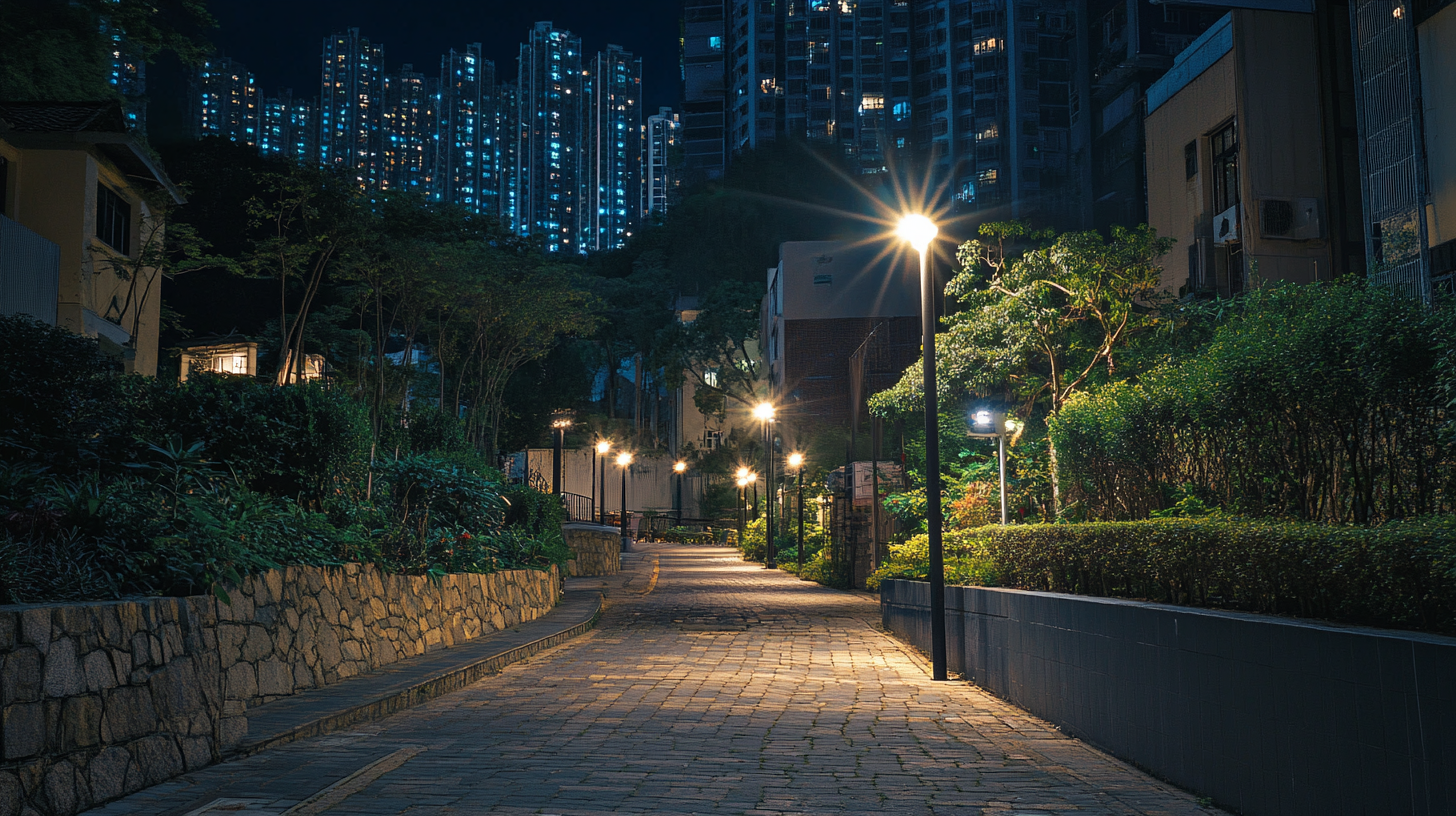Advantages of Choosing Exterior Led Lighting for Sustainable Urban Development
The growing emphasis on sustainable urban development has led cities worldwide to explore innovative solutions that align with environmental goals. One prominent option gaining traction is the implementation of exterior LED lighting. According to a report by the U.S. Department of Energy, outdoor LED lighting can be up to 75% more energy-efficient than traditional incandescent or halogen bulbs, significantly reducing overall energy consumption. As urban areas grapple with increasing energy demands and environmental concerns, the shift to exterior LED lighting not only promotes sustainability but also enhances the aesthetic appeal and safety of urban environments.
Furthermore, studies indicate that the use of exterior LED lighting contributes to lower greenhouse gas emissions, which are critical metrics in urban sustainability strategies. The International Dark-Sky Association highlights that proper outdoor lighting can reduce light pollution by up to 70%, thereby improving the natural nighttime environment. As cities look to increase their resilience against climate change while enhancing public spaces, the adoption of exterior LED lighting stands out as a vital component in creating efficient, safe, and sustainable urban landscapes.

Benefits of Energy Efficiency in Exterior LED Lighting Solutions
As urban areas continue to expand, the need for sustainable solutions in city infrastructure becomes increasingly critical. One powerful approach is the integration of exterior LED lighting, which has emerged as a leading choice due to its impressive energy efficiency. According to a report from the U.S. Department of Energy, LED lighting uses at least 75% less energy and lasts 25 times longer than incandescent lighting. This significant reduction in energy consumption directly contributes to lower greenhouse gas emissions, aligning with global efforts to combat climate change. Moreover, the financial benefits of adopting LED lighting for outdoor applications are substantial. The International Energy Agency (IEA) estimates that transitioning to LED street lighting could save cities approximately $10 billion annually in energy costs alone. These savings can be reallocated to other crucial urban development projects, enhancing the overall quality of life for residents. Additionally, with the longevity of LED fixtures, maintenance costs are drastically reduced, allowing municipalities to invest their resources more effectively. Further emphasizing the sustainability aspect, state-of-the-art LED technology not only stands out for its energy efficiency but also its ability to improve urban safety and aesthetics. Enhanced visibility from well-lit public spaces contributes to reduced crime rates and improved pedestrian safety. As cities face growing pressures from climate change, investing in exterior LED lighting is not merely a choice for energy savings—it's a strategic step towards greener, safer, and more vibrant urban environments.

Enhancing Urban Aesthetics Through Innovative LED Design
The integration of innovative LED design in urban settings is revolutionizing city aesthetics while simultaneously promoting sustainability. According to a report from the International Energy Agency (IEA), cities can reduce their energy consumption for street lighting by up to 50% through the implementation of LED technology. This transition not only cuts costs but also enhances the visual appeal of urban landscapes. City planners are increasingly recognizing that well-designed LED installations can create vibrant public spaces that invite community engagement and foster social interactions.
Moreover, the versatility of LED lighting allows for creative expression through various color temperatures and designs. The American Society of Landscape Architects (ASLA) emphasizes that effective lighting can transform an ordinary streetscape into an extraordinary one, enhancing features such as parks, monuments, and architectural highlights. By utilizing LED technology, municipalities can craft dynamic lighting schemes that change with the seasons or during special events, offering a unique visual experience for residents and visitors alike.
The ability of LED lights to complement urban design is evident in numerous cities that have adopted these technologies. For example, the city of Los Angeles reported a 63% reduction in energy savings after switching to LED street lights, and the improved light quality has made neighborhoods safer and more appealing at night. Such enhancements contribute to a more vibrant urban atmosphere, ultimately influencing residents' quality of life and attraction for potential newcomers. Innovative LED designs not only serve practical lighting needs but also elevate the aesthetic value of urban spaces, making them integral to sustainable urban development.

Reducing Light Pollution and Its Impact on Urban Ecosystems
Urban ecosystems are often threatened by light pollution, a growing issue that not only affects wildlife but can also disrupt plant life and human well-being. Exterior LED lighting presents a sustainable solution that can significantly mitigate this problem. Unlike traditional lighting, LEDs emit directed light that can be carefully controlled, reducing excess glare and minimizing the amount of artificial light that spills into areas where it is not needed. This targeted approach allows for the illumination of urban spaces while preserving the natural nighttime environment.
One of the critical advantages of adopting LED lighting in urban developments is its capacity to enhance biodiversity. Many species, including nocturnal animals, rely on natural light cues for navigation, reproduction, and feeding. Excessive artificial light can disorient these species and disrupt their natural behaviors. By implementing LED fixtures that reduce light pollution, urban areas can create more habitats conducive to wildlife, fostering healthier urban ecosystems. Additionally, cities can also benefit from improved energy efficiency, as LEDs consume less power and have a longer lifespan compared to traditional lighting options.
Moreover, reduced light pollution contributes to improved human health and quality of life. Excessive nighttime artificial lighting has been linked to various health issues, including sleep disorders and increased stress levels. By choosing exterior LED lighting that minimizes light pollution, cities can create serene and inviting atmospheres that promote relaxation and well-being. This alignment with sustainable urban development leads to healthier communities that value both environmental responsibility and the importance of preserving natural habitats, ultimately creating a harmonious balance between urban living and nature.

Cost-Effectiveness and Longevity of LED Lighting for Cities
One of the standout advantages of exterior LED lighting for cities lies in its remarkable cost-effectiveness. Traditional street lighting systems often come with high energy consumption rates, leading to inflated electricity bills for municipalities. In contrast, LED lighting solutions are designed to be energy-efficient, consuming up to 80% less energy than their incandescent or halogen counterparts. This significant reduction in energy usage not only translates into lower operational costs but also contributes to decreased carbon emissions, leading to a more sustainable urban environment.
Moreover, the longevity of LED lights further enhances their economic appeal. With an impressive lifespan of 25,000 to 50,000 hours, LEDs require far less frequent replacement compared to traditional lighting options, which typically last only a few thousand hours. This longevity means reduced maintenance costs, as cities spend less time and money on light replacements and repairs. Additionally, longer-lasting lights ensure greater consistency in urban illumination, improving safety and visibility for residents. By investing in durable LED lighting, urban areas can allocate funds toward other pressing needs, maximizing their budget while fostering a greener, more sustainable community.
Fostering Community Safety and Well-Being with Better Illumination
The integration of exterior LED lighting in urban environments plays a vital role in fostering community safety and well-being. Improved illumination not only enhances the visual aesthetics of a neighborhood but also significantly contributes to the safety of its residents. Adequate lighting in public spaces, parks, and streets discourages criminal activity by increasing visibility and ensuring that potential threats are easily observed. This proactive approach to urban safety reassures community members, encouraging them to engage more freely with their surroundings, whether walking, cycling, or participating in local events.
Beyond merely enhancing safety, exterior LED lighting promotes a sense of community and well-being. Well-lit areas allow for social interactions to flourish, enabling families and friends to gather within their neighborhoods comfortably. The warm, inviting glow of LED lights creates an atmosphere that encourages evening activities, from open-air markets to community gatherings, thus strengthening social ties. Moreover, LEDs are energy-efficient and environmentally friendly, which aligns with the growing emphasis on sustainability in urban development. This not only serves the present needs of the community but also ensures that future generations inherit well-designed, safe, and vibrant living spaces.
As cities continue to evolve, the strategic implementation of exterior LED lighting becomes essential in creating environments that prioritize safety and well-being. By carefully incorporating effective lighting solutions, urban planners can cultivate thriving communities that reflect a commitment to sustainable living, ultimately leading to happier and healthier urban populations.

